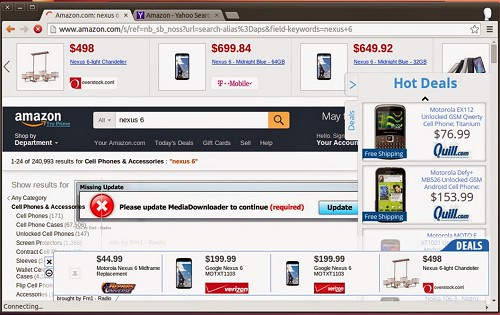Google: 5 Million users infected with adware
Posted by: Jon Ben-Mayor on 05/06/2015 10:00 AM
[
 Comments
]
Comments
]
Google started a program in March of this year to outline the problems with unwanted ad injectors, a common symptom of unwanted software.
Today, we’re releasing the results of a study performed with the University of California, Berkeley and Santa Barbara that examines the ad injector ecosystem, in-depth, for the first time. We’ve summarized our key findings below, as well as Google’s broader efforts to protect users from unwanted software. The full report, which you can read here, will be presented later this month at the IEEE Symposium on Security & Privacy.

This is what users might see if their browsers were infected with ad injectors ‘in the wild’
To pursue this research, we custom-built an ad injection “detector” for Google sites. This tool helped us identify tens of millions of instances of ad injection “in the wild” over the course of several months in 2014, the duration of our study.
Over those months, the system detected more than 5,339,913 IP addresses infected with adware, roughly 5.5 percent the total requests.
To combat this, Google has updated their AdWords policies to make it more difficult for advertisers to promote unwanted software on AdWords. It's still early, but say they have already seen encouraging results since making the change: the number of 'Safe Browsing' warnings that users receive in Chrome after clicking AdWords ads has dropped by more than 95%.
Source: The Verge
Today, we’re releasing the results of a study performed with the University of California, Berkeley and Santa Barbara that examines the ad injector ecosystem, in-depth, for the first time. We’ve summarized our key findings below, as well as Google’s broader efforts to protect users from unwanted software. The full report, which you can read here, will be presented later this month at the IEEE Symposium on Security & Privacy.

This is what users might see if their browsers were infected with ad injectors ‘in the wild’
To pursue this research, we custom-built an ad injection “detector” for Google sites. This tool helped us identify tens of millions of instances of ad injection “in the wild” over the course of several months in 2014, the duration of our study.
Over those months, the system detected more than 5,339,913 IP addresses infected with adware, roughly 5.5 percent the total requests.
To combat this, Google has updated their AdWords policies to make it more difficult for advertisers to promote unwanted software on AdWords. It's still early, but say they have already seen encouraging results since making the change: the number of 'Safe Browsing' warnings that users receive in Chrome after clicking AdWords ads has dropped by more than 95%.
Source: The Verge
Comments






